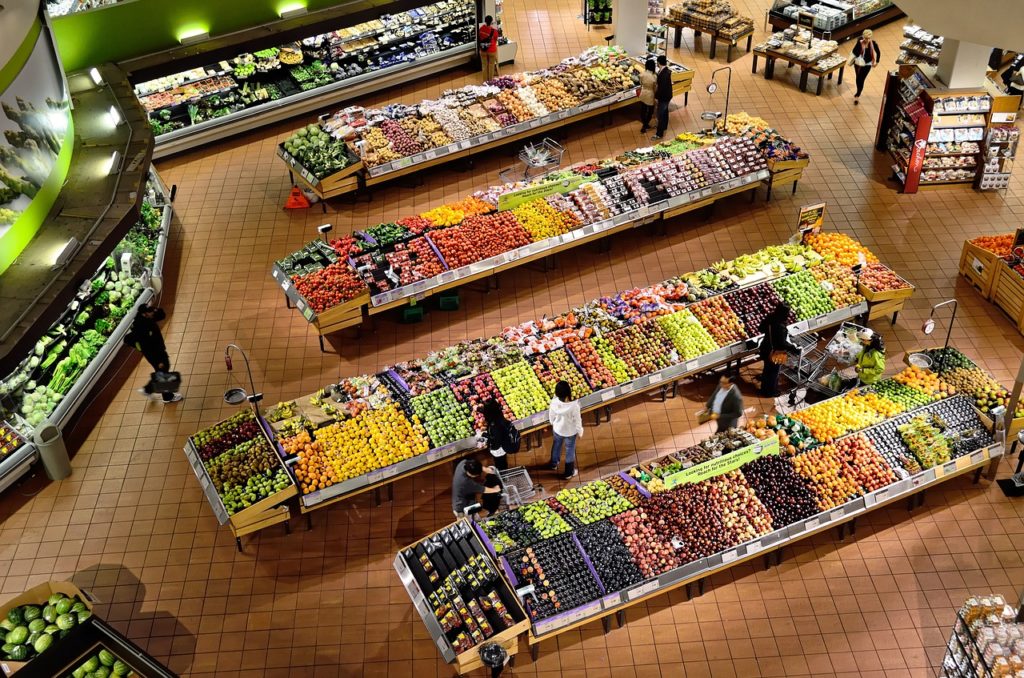Food insecurity remains one of today’s most vexing global problems. Nobody wants to go to bed hungry, but tremendous leaps in food growing capabilities over the past decades have not kept 800 million from malnourishment, according to the estimates of the United Nations Food and Agricultural Organization.
There are two things we might do to change this. We can grow more food, and we can better manage the food we already grow. Artificial intelligence (AI) can help with both approaches.
The previous articles in this series explored ways in which farmers might use A. systems that absorb extensive quantities of field data, model all possible growing scenarios and recommend the best course of action for growing higher and higher yields. With some level of autonomy, AI systems might be trusted to program farm equipment so that just the right amount of various inputs are distributed at just the right time on a location-by-location basis in the growers’ fields. Such a precision approach is the most likely to produce the highest yields and the best return on investment. This level of innovation is, of course, the key to growing more. It’s what’s needed to save agriculture.
But the potential for AI does not stop at the border of a farmer’s field. The ability to learn how to manage seemingly unpredictable scenarios using data, science and statistical probabilities can pay huge dividends in resource efficiency on a global scale, which is what needs to happen to ease the world’s food security problems.
Global hunger is a complex problem, with political dimensions that extend well beyond the scope of this article. The role AI can play is making food production shortages and distribution snafus a thing of the past.
What is food insecurity?
The U.N. definition of hunger is the proportion of the population that does not receive the minimum daily amount of calories. The populations that struggle the most to achieve this level are found in less well-off parts of the world such as sub-Saharan Africa and South Asia. The 25 hardest-hit countries see a rate of undernourishment that averages 40 percent.
With up to a third of all the food we produce being discarded or spoiling before it can be consumed, there is a great deal of room to optimize the supply chain with advanced artificial intelligence. Any number of issues contributes to this waste, such as overproduction of certain commodities, difficulties in harvesting, transportation losses, processing losses, packaging failure or the ever-present danger to food posed by insects and the outbreak of disease. And, of course, the greatest losses are found at the consumer level — that expired carton of milk forgotten in the back of the refrigerator.
Advanced AI systems probably won’t do much to adjust consumer buying habits, nor can AI keep boxes of fruits and vegetables from falling off the back of trucks. AI certainly won’t keep hot dogs from being sold in packs of 10 with dog buns offered only in eight packs.
What AI can do, instead, is stabilize commodity markets by better matching supply to demand. More precise logistics will ensure deliveries are made on time, before spoilage can occur. Early detection of crop anomalies would help prevent disease and insects from wiping out harvests by allowing growers to take action well before the entire harvest is lost.
The potential payoff for AI-enhanced efficiency is huge considering the scale of food production. Since the U.N. estimates that 1.3 billion tons5 of food is wasted, improving processes by a small percentage, say ten percent, represents the potential to save 130 million tons of food annually. That would go a long way toward improving food security.
Of course, food security won’t be achieved solely by stacking extra food in a silo or warehouse. The food must be available where and when it is needed most. As the global population heads toward the 10 billion mark in the decades ahead, the demand for food will continue its steady rise, with the greatest jump in demand found in sub-Saharan Africa. This region’s food supply chain stands to benefit the most from the sort of optimization that AI makes possible.
Farmers can use AI to better manage their farms for the needs of the global marketplace. At a larger scale, governments can use AI to create a more accurate picture of production in regions of interest so that they can better manage trade and food distribution. At the most local level, individuals might harness the same powerful tools to better understand where their food comes from, perhaps using the system to dial in a more healthy mix of meals.
The exceptional precision promised by AI systems will ensure that we have more food and waste less of it. This will go a long way to restoring a full day’s nutrition to those who currently go without.
Joseph Byrum, senior R&D and strategic marketing executive in Life Sciences, Global Product Development, Innovation, and Delivery. Connect on Twitter @ByrumJoseph.













